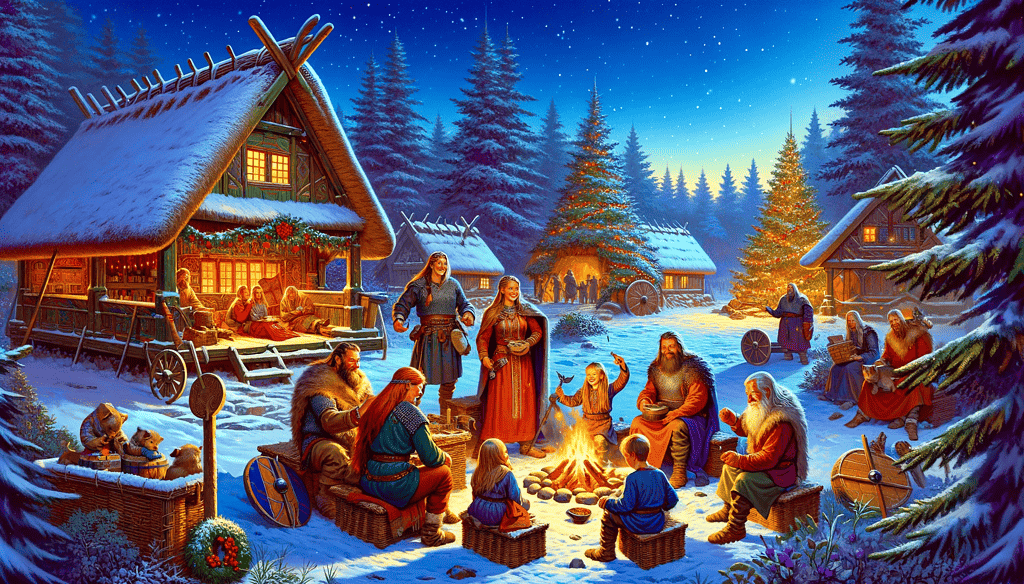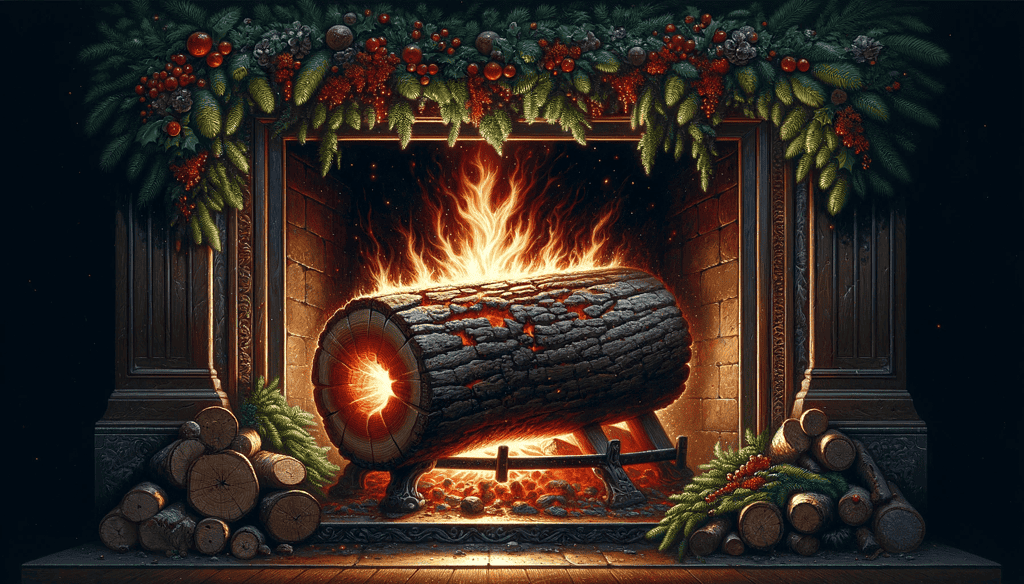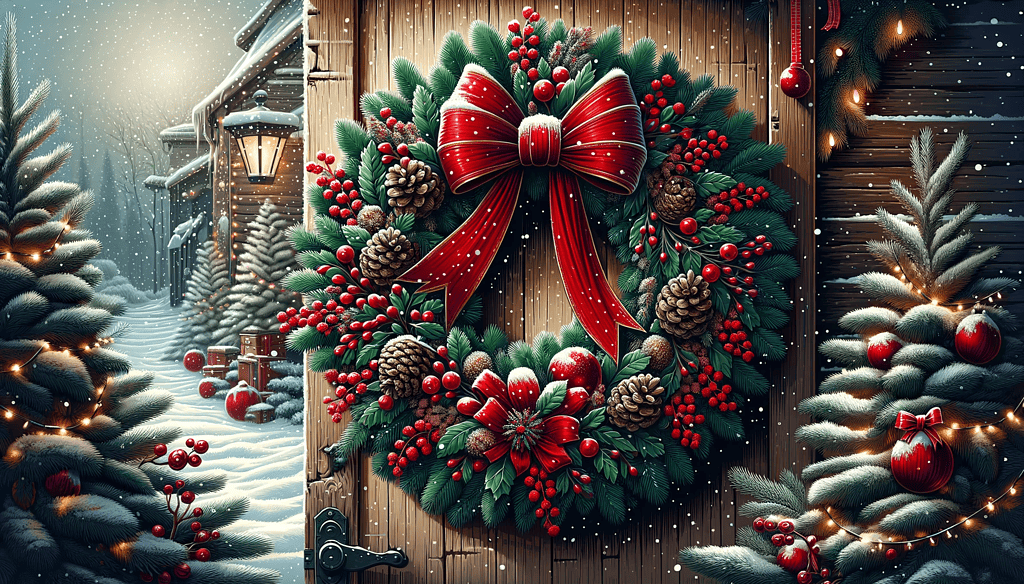
Christmas and Vikings don’t seem to go hand in hand. But the two have more in common than you’d think.
Imagine the harsh, cold landscapes of Scandinavia during the deep midwinter under the shelter of an ancient Norway tree. Here, the seeds of what we now know as Christmas were sown amidst people cloaked in fur and warmed by the fire. The Vikings, known for their seafaring prowess, celebrated a winter festival that would later evolve into modern Christmas celebrations. This period, known as Yule or Jól, was deeply intertwined with the winter solstice, marking the harvest return of the sun and longer days ahead.
Among these friends of the north, the influence of pagan traditions was profound. Winter solstice celebrations, with their focus on the cycle of nature and the rebirth of the sun, formed the core of these festivities. The geographic spread of these Scandinavian traditions was as vast as the Vikings’ explorations and settlements, reaching from the heart of Scandinavia to distant lands like Iceland.
Feasts and Fire: The Heart of Viking Celebrations
Central to Viking Yuletide celebrations were grand feasts. These gatherings were not just about satiating hunger; they were a vibrant celebration of Norse myths, legends, and reverence for their gods. Gods like Odin, associated with Yuletide, were honored with Blót — elaborate sacrifices, and rituals. In particular, Odin’s eight-legged horse, Sleipnir, would leave gifts for children who filled their boots with hay. These feasts were a time for communities to come together, share stories, and honor the deities that governed their lives, just like children anticipate gifts from Santa Claus today.
The use of evergreens, wreaths symbolizing eternal life, and the importance of fire and light in dispelling the darkness of winter, were key elements of these celebrations. Norse symbols and artifacts like the arrow that hurt Balder, the god of light, laden with meanings and stories, were prominent in these rituals, adding depth and context to the festivities.
Viking Yule: Food, Drink, and Fellowship
The preparation of traditional dishes was a significant aspect of Viking Yuletide. These recipes, passed down through generations, were more than just food; they were a celebration of culture and heritage. The communal feasting underscored the importance of togetherness during these long winter nights. Even today, you may find a goat-shaped cake, an ode to the Yule Goat, at a Norse holiday event.
Alcohol, especially mead and ale, played a pivotal role in these gatherings. It was not just a means of merry-making but also a way to bond, share stories, and strengthen community ties. The mistletoe ritual was also integral to these feasts, adding an element of suspense and excitement.
Religious and Pagan Rituals Turned Christian
Many of the things we do at Christmas nowadays can be dated to the Vikings.
The Yule Log

The Yule Log, a key symbol in Viking Yuletide traditions, was more than just a source of warmth. It embodied the essence of renewal and the triumph of light over darkness. The ritual burning of the Yule Log was a deeply spiritual act, intertwined with mythology and storytelling, reflecting the Vikings’ profound connection with nature, the divine and the incoming wave of Christianity.
Gift-Giving: From Odin to Father Christmas
Gift-giving was an integral part of Viking Yuletide, although it differed significantly from modern Christmas traditions. The gifts exchanged among the Vikings often had practical uses, reflecting the challenging environments they lived in. However, these exchanges also had deep social and symbolic significance, strengthening bonds and expressing respect and affection, much similar to how we anticipate gifts from Father Christmas today.
Yuletide Joy: Sports, Music, and Sagas
Yuletide was also a time for games and sports, providing much-needed diversion during the long winter. Music and dance played a pivotal role in these celebrations, with traditional songs and rhythmic movements adding to the festive spirit. Storytelling, particularly the recitation of sagas, was a favorite pastime, connecting the community to their ancestral roots and shared history.
Viking Yule Decorations and Symbolism

In Viking homes, decorations often had symbolic meanings, reflecting beliefs, and traditions. Evergreens and symbols of Norse mythology were commonly used, along with arrows to honor the memory of Balder. The role of family gatherings and community bonding was paramount, with traditions involving children and elders alike. Hospitality and generosity were core values, embodied in every aspect of the celebrations.
Influence on Modern Christmas
The influence of Viking Yuletide traditions on modern Christmas is undeniable. From the concept of the Yule Log to communal feasting and the significance of the winter solstice, these ancient practices have left an indelible mark on how we celebrate today. The adaptation of these traditions in various regions once influenced by Vikings shows the enduring legacy of their culture and beliefs. Adaptations like Santa Claus and Father Christmas in turn have been shaped by their history and traditions.
As we celebrate Christmas today, it’s fascinating to reflect on its origins and how it has been shaped by various cultures and traditions over the centuries. The Viking celebration of Yuletide, with its rich tapestry of food, rituals, and community bonding, offers a captivating glimpse into the past and its influence on our present-day festivities.






